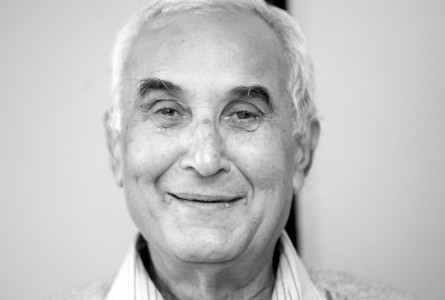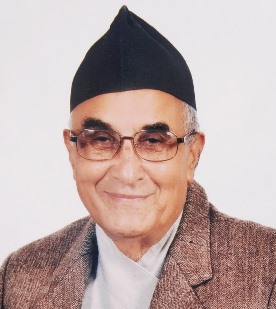Reposted with permission
>>Authored by Sam Daley-Harris, founder and former director of the Microcredit Summit Campaign. He is currently running the Center for Citizen Empowerment and Transformation.
When the American Economic Journal recently published a group of independent studies suggesting that tiny loans to the poor usually don’t raise incomes, it left me scratching my head (although this response to those studies did ring true). As the first director of the Microcredit Summit Campaign, I’ve had the privilege of observing anti-poverty fighters like Grameen Bank founder Muhammad Yunus and BRAC founder Fazle Abed for decades. They, and others like them, never said, “We’re giving millions of microloans a year, we’re done!” Instead, they kept asking this question: “What more do our clients need to move themselves and their families out of poverty.” That question, the effectiveness of their responses to it, and the scale of their institutions have helped their country, Bangladesh, be among the poorest countries in the world most likely to achieve all of the Millennium Development Goals on time.
I first met Muhammad Yunus in 1987. By then Grameen Bank had already worked with its clients to develop the bank’s “16 Decisions,” pledges the clients made that included: 1) we shall not live in dilapidated houses, we shall repair our houses and work towards constructing new houses, 2) we shall grow vegetables all the year round, eat plenty of them and sell the surplus, 3) we shall plan to keep our families small. We shall minimize our expenditures. We shall look after our health, 4) we shall educate our children, 5) we shall build and use pit-latrines, and 6) we shall drink water from tube wells. If it is not available, we shall boil water or use alum.
To be sure, banks like Citi and Barclay’s never had a pit latrine policy with their clients, but this poverty-fighting microfinance institution (MFI) did.
It would take weeks of blogging to cover BRAC’s beyond-the-micro-loan initiatives. But, just as an example, BRAC’s ultra-poor program has been replicated around the world and its schools for children who never entered school or dropped out at an early age are a global model.

Grameen Phone ladies
Grameen Phone and Grameen Shakti (a renewable energy company) are giants in Bangladesh and their work with the poor are examples of a microfinance institution continuing to ask what more can be done to improve the well-being its clients.
This eye-popping creativity coming out of microfinance has fascinated me for decades and has taken an entirely different direction with the work of Marshall Saunders, founder of Citizen’s Climate Lobby. In the early 1990s, Saunders worked with Rotary to raise $700,000 for FINCA, teamed with Grameen Foundation and their five-year strategy to help its partners add five million new clients, and then rolled up his sleeves and started Grameen del la Frontera, a microfinance institution in the state of Sonora, Mexico. But along the way, Saunders also got involved as a citizen advocate with the anti-poverty lobby group RESULTS.
Saunders’ view of the world was shaped, in part, by this early encounter with RESULTS. He joined me for a radio interview I was doing on the NPR station in San Diego. During the interview I mentioned that RESULTS had successfully lobbied Congress for $200 million for microcredit.
“At first I thought ‘that’s not right,’” Saunders recalled. “I had busted my butt for three years to raise nearly $700,000 through Rotary, and RESULTS had raised $200 million in their lobbying….it didn’t seem to be realistic, the $200 million. I did make a mental note of it however.”
Saunders continued his work with RESULTS and made a serious commitment to Grameen de la Frontera. He had read about climate change and realized that sea level rise would affect some of his clients.
“It occurred to me that I was trying to get 5,000 more borrowers in Mexico,” Saunders said, “and that Bangladesh might lose millions due to sea level rise. I felt I had to get to the bottom of this. I went to see “An Inconvenient Truth” and went back about a week later…. Then I read that Al Gore was going to train 1,000 people. I said “holy socks, of course that’s what I want to do.”
He joined about 250 others in Nashville, TN for one of the trainings and returned to San Diego to lead the slide show dozens of times. Early on he realized that 98 percent of the information focused on the problem of climate change and that just 2 percent focused on what people could do about it. In addition, many of the actions centered on using more energy efficient light bulbs but didn’t really get at the big picture, public policy.
This microfinance promoter, hunger activist and newly minted climate educator was now reading the newspaper every morning and read that Congress had just approved $18 billion in subsidies to the fossil fuel industry.
“I’d gotten people to change 18 light bulbs yesterday,” he thought, “and that same day Congress approved $18 billion in subsidies to the fossil fuel industry. This is never going to work.”
In 2007 Saunders asked me to coach him in starting Citizens Climate Lobby (CCL). Several months later he led his first presentation with 29 people in the room. He hoped that at least four would agree to become the first chapter of CCL, but all 29 said yes. In 2014, CCL volunteers in the US and Canada had 2,253 letters to the editor published (up from 36 in 2010), had 291 op-eds published (up from 20 in 2010), and had 1,086 meetings with members of Congress, Parliament, or their staff (up from 106 in 2010). Doing something to protect microfinance clients in Bangladesh from the effects of climate change was his first impetus.
When the American Economic Journal recently published a group of independent studies suggesting that tiny loans to the poor usually don’t raise incomes it left me scratching my head. While CCL is truly a unique case, I still wonder why the researchers keep looking at just one intervention when the practitioners know it takes more and why they keep looking at the wrong institutions.
Sam Daley-Harris is the author of Reclaiming Our Democracy (www.reclaimingourdemocracy.org). He founded the anti-poverty lobby RESULTS in 1980 (www.results.org), founded the Microcredit Summit Campaign in 1995 (www.microcreditsummit.org), founded what would grow to become Truelift in 2010 (www.truelift.com), and founded the Center for Citizen Empowerment and Transformation in 2012 (www.citizenempowermentandtransformation.org). Portions of this blog are taken from Reclaiming Our Democracy: Healing the Break between People and Government © Copyright 2013 by Sam Daley-Harris. Published by Camino Books, Inc., Philadelphia, PA. Used by permission of the publisher. All rights reserved.


 As the deputy governor of the central bank, Dr. Pant laid the foundation for microcredit in Nepal. Dr. Pant was greatly influenced by Prof. Muhammad Yunus (to the right) and was indoctrinated by the Nobel laureate into microfinance.
As the deputy governor of the central bank, Dr. Pant laid the foundation for microcredit in Nepal. Dr. Pant was greatly influenced by Prof. Muhammad Yunus (to the right) and was indoctrinated by the Nobel laureate into microfinance.
 Lately, he underwent treatment at Nepal Cancer Hospital and Research Centre, Lalitpur. He passed away at his residence in Anamnagar, Kathmandu on September 8th.
Lately, he underwent treatment at Nepal Cancer Hospital and Research Centre, Lalitpur. He passed away at his residence in Anamnagar, Kathmandu on September 8th. “When the Microcredit Summit Campaign was launched 18 years ago, I found it quite remarkable that a high ranking Central Bank official in any country had so fully embraced microfinance for the very poor. But that is what Dr. HD Pant had done and it was an honor to have his wisdom and commitment contribute to the success of the Summits that followed. I hope his family and friends find some solace in the greatness of his achievements.”
“When the Microcredit Summit Campaign was launched 18 years ago, I found it quite remarkable that a high ranking Central Bank official in any country had so fully embraced microfinance for the very poor. But that is what Dr. HD Pant had done and it was an honor to have his wisdom and commitment contribute to the success of the Summits that followed. I hope his family and friends find some solace in the greatness of his achievements.” “He was a good friend and served the microfinance sector with devotion and dedication. While I focused in the eastern region of Nepal, Dr. Pant worked in the western region in the districts of Rupandehi, Kapilbastu and Nawalparasi. We competed and also complemented each other. Dr. Pant was an honest and hardworking man, wholly committed towards his work for the poor. It is very sad to lose a colleague and friend of many years.”
“He was a good friend and served the microfinance sector with devotion and dedication. While I focused in the eastern region of Nepal, Dr. Pant worked in the western region in the districts of Rupandehi, Kapilbastu and Nawalparasi. We competed and also complemented each other. Dr. Pant was an honest and hardworking man, wholly committed towards his work for the poor. It is very sad to lose a colleague and friend of many years.”


